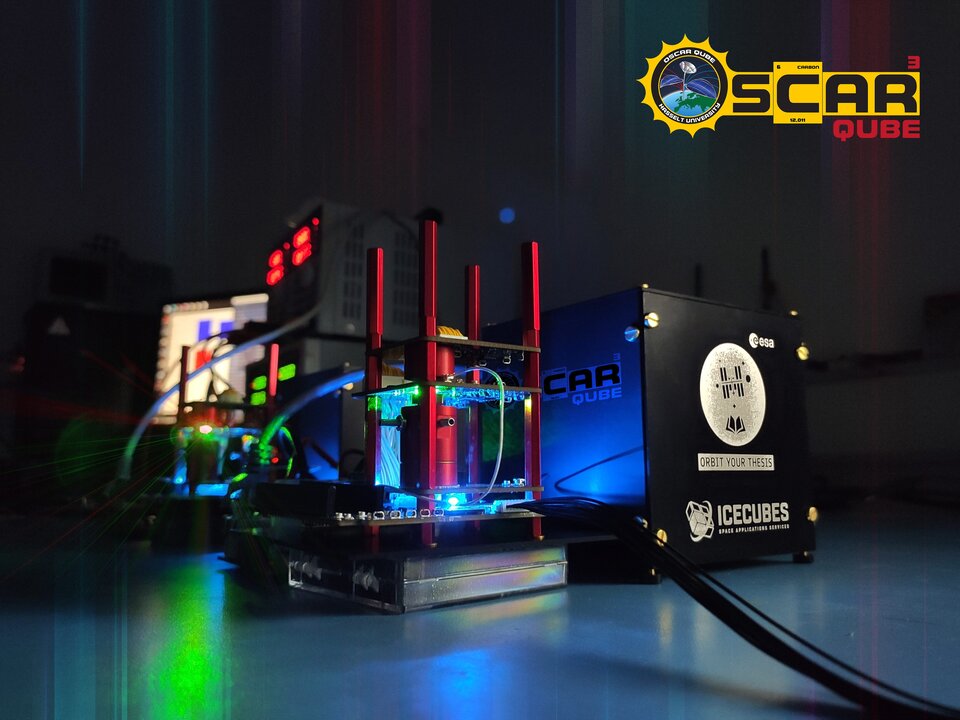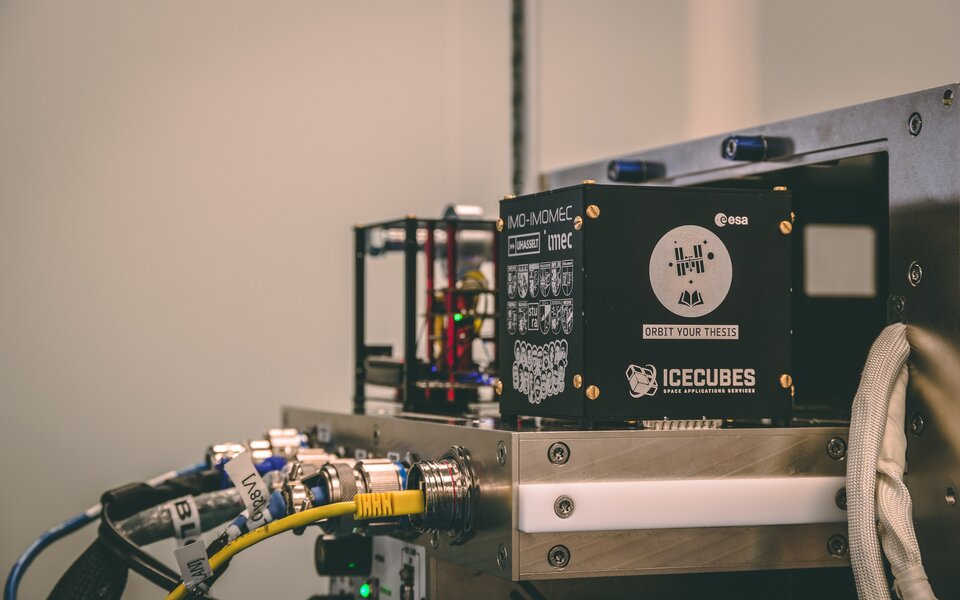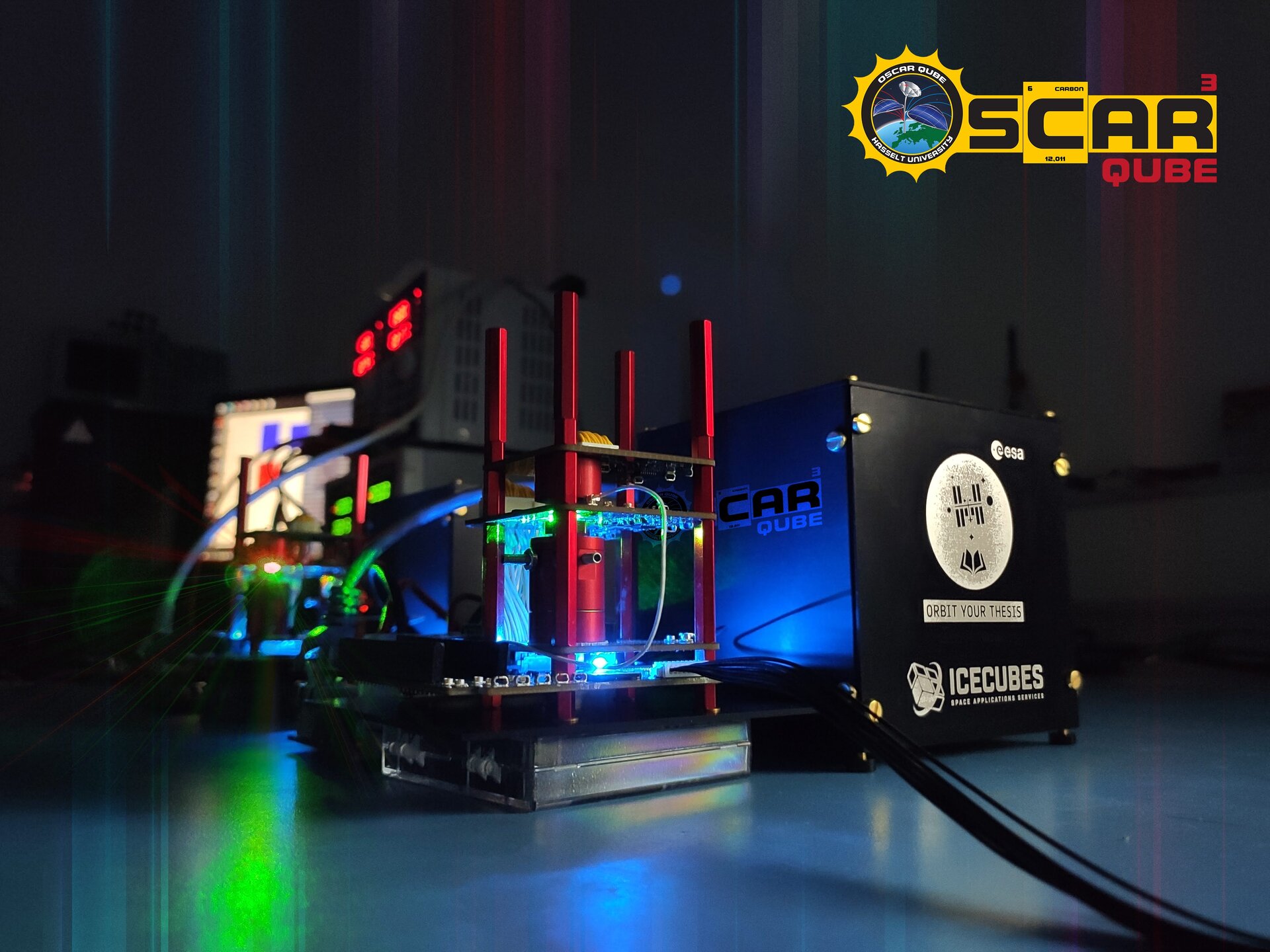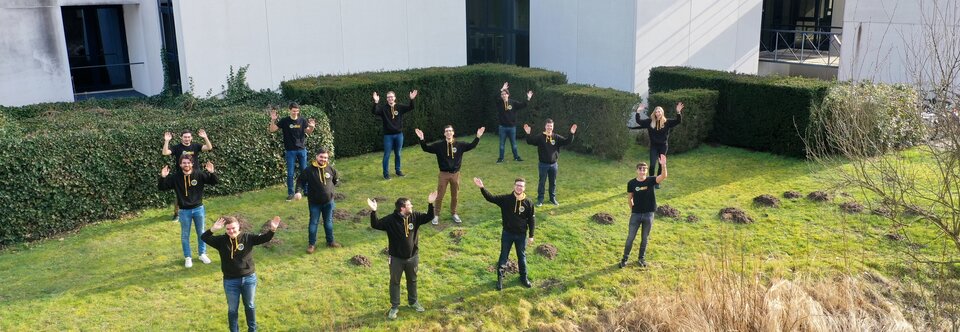Orbit Your Thesis! hardware OSCAR QUBE ready to fly to ISS
A mere 400 days ago, one team of 18 university students going by the name OSCAR QUBE were selected from 10 proposals to take part in the Orbit Your Thesis! programme to fly an experiment to the International Space Station.
Between then and now, a relatively short time in terms of space hardware development, the team from University of Hasselt in Belgium has designed, developed, assembled and tested the hardware and software of their experiment. With a series of reviews now behind them, the students have proven to ESA and Space Applications Services that the final configuration of the experiment is working well and safe to fly on board the International Space Station. Their experiment will attempt to map the magnetic field in low Earth orbit (LEO) using quantum-based technology that has never flown to space before.

Between then and now, a relatively short time in terms of space hardware development, the team from University of Hasselt in Belgium has designed, developed, assembled and tested the hardware and software of their experiment. With a series of reviews now behind them, the students have proven to ESA and Space Applications Services that the final configuration of the experiment is working well and safe to fly on board the International Space Station. Their experiment will attempt to map the magnetic field in low Earth orbit (LEO) using quantum-based technology that has never flown to space before.
Orbit Your Thesis! is one of the latest additions to the arsenal of hands-on programmes that ESA Academy offers university students across ESA member states. It allows them the privileged opportunity to have their experiment operate on the International Space Station for a period of up to 4 months. Using the commercial facility called ICECubes owned and operated by Space Applications Services, the student teams can simply ‘plug and play’ their experiment on the ICECubes facility in Columbus laboratory module.
Plug and Play

While the term ‘plug and play’ sounds simple enough, the OSCAR QUBE students still had to work extremely hard to reach the final preparation stage so quickly. The educational programme aims to take teams through each stage of space project development from Phase B to Phase F, which essentially covers identification of requirements all the way through to recovery of the experiment from the ISS. Sending hardware to space is so vastly different than performing a laboratory experiment that the entire philosophy approaching the hardware and software is new to many university students. To help them along this unfamiliar route, an expert panel comprising of ESA Academy, ESA Directorate of Technology, Space Applications and the European Low Gravity Research Association (ELGRA) was at hand to review and guide the team, but it essentially followed simplified principles of ECSS project phases, the European standards for space projects.
A step-by-step approach
Each phase was marked by a major milestone review. Each review required the team to submit to a panel of experts (Review Board) a data pack with all the necessary documentation to ensure that the experiment would achieve what it set out to do, in a safe manner. The first of such stages is called the Preliminary Design Review (PDR)- where a series of design solutions are presented to the Review Board which should, according to the team, achieve the requirements initially set for their science but also for the compliance with Columbus systems. Also, with a project of this magnitude, the team had to prepare management plans, pass a preliminary safety assessment and show their intentions on how the hardware subsystems will be assembled and tested.
The PDR was passed in September and just a few months after that, the team declared they were ready for the next review, the Critical Design Review (CDR). This delves deeper still in each aspect of the project. The team had already started prototyping many aspects of their experiment and after a few iterations with the Review Board regarding structural finite element analysis and some software architecture inconsistencies, that review was also passed in February 2021.
The next phase was the assembly, testing and verification which would culminate in the Flight Acceptance Review (FAR). Here the team assembled their flight experiment and put it through its paces at system and subsystem levels. Once the team were comfortable with the performance of their experiment, they were ready for the environmental test phases. One of the first tests was the ElectroMagnetic Compatibility (EMC) tests ensure that the experiment won’t interfere or be interfered with by other experiments or critical systems aboard the Columbus module. Then the team also had to prove that their experiment could survive the vibrations of the launch. Indeed with such a precise laser pointing and focusing system within the cube, any misalignment after a launch would jeopardise the mission success. This test was performed at ESA Academy ESEC Galaxia Cubesat testing facilities in Belgium.
The students had designed the cube well and no major issues were identified during any of the tests – this gave the green light to go ahead during the Flight Acceptance Review for the team to send the hardware to the logistics contractor Altec in Turin, Italy.
The experiment cube will soon be on its way to Florida, US, from where it will be launched alongside other payloads and resupply cargo to the International Space Station in mid August-2021 onboard SpX CRS23.
Meanwhile, the team can keep working on their ground model until ESA astronaut Thomas Pesquet installs their hardware, likely in September. The next phase will be commissioning and operations. The Cube will stay on board the ISS for several months, mapping the magnetic fields in LEO and hopefully providing the team with the accurate data they designed for.
Congratulations to the OSCAR QUBE team for achieving this important milestone in their project!



